Tesla Model S P85+ review: The car of the future is already here
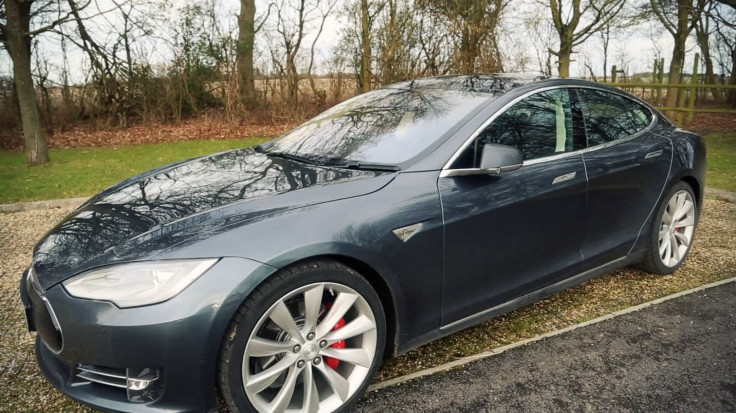
Tesla Model S Key Features:
- Single-gear electric motor
- 416bhp / 433ft lb
- 0-60mph in 4.2 seconds
- 130mph (electronically limited)
- Seats five adults plus two children
- Charges 80% in 40 minutes
- Range of 250 miles
- Price as reviewed: around £80,000 (base price: £70,000)
Tesla Model S Review
Log into an iPhone app, check how much charge is in the battery and set the heating while you eat breakfast. From your very first interactions with the Tesla Model S, you know it's unlike any other car on the road.
The car continues to impress before you get inside. Walk up to it with the key in your pocket (I say key, it's actually a small plastic model of the car itself) and the Model S senses your presence. The mirrors unfold and door handles glide outwards. Grab one, get in and prepare yourself for a journey unlike anything you've experienced before.
At this point I could talk about the huge touch screen, the electric, heated seats which remember exactly how you set them, the 3G connection, the two extra child's seats in the boot, and everything else the Model S has to offer. But they can wait; let's get straight to the party piece.
Tesla Model S: Performance
Foot on the brake to wake the car, engage drive with the Mercedes-sourced gear selector, breathe, hover your foot over the accelerator, then bury it. The car's electric motor feeds 416 horsepower and 600 newton metres of torque (433ft lb in old money) to the rear wheels and launches you down the road with the unrelenting shove of a roller coaster.
Traction control filtering out a hint of slip from the 21-inch rear wheels, 60mph ticks by in 4.2 seconds - faster than a Porsche 911 Carrera S. It isn't just the initial launch which impresses, but the way the Model S keeps you pinned to the seat with a ferocity which doesn't fade until deep into license-losing territory. Because there's only one gear the barrage of torque is relentless, and can be summoned instantly - this is where electric cars reign supreme over their internal combustion counterparts.
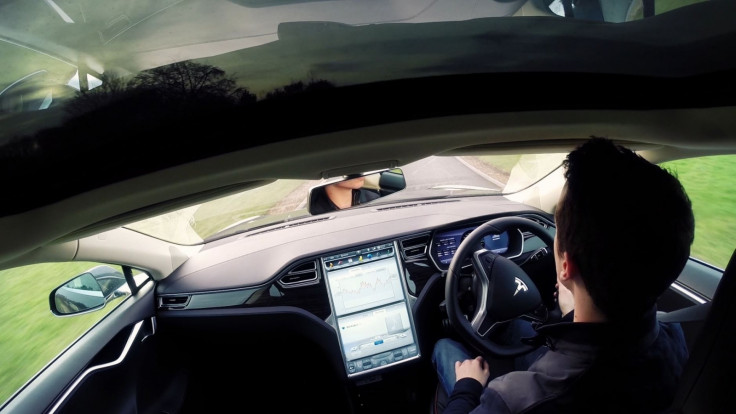
Flooring the accelerator never, ever gets boring, and feeling the immense surge forward is hugely addictive. The sci-fi whine from the motor and regenerative braking system only adds to the otherworldliness of it all.
The mind-bending turn of pace is even more impressive when you consider the size of the Model S. It's just shy of five metres long, two metres wide, and weighs more than two tonnes.
But all that mass is more muscle than fat. Because it was designed to be a fully electric car from the very start - there is no petrol, diesel or hybrid alternative - the Model S is packaged cleverly. The immensely heavy battery pack is in the floor, keeping the centre of gravity low, which improves handling and stability.
Being much smaller than an equally powerful engine means the Tesla's motor can be tucked away between the rear wheels, leading to masses of storage. The rear boot is about what you'd expect from a car of this size - plus my model had the optional (£2,100) children's seats, good for kids aged five to 10. There's also a front boot large enough for a weekly food shop or medium-sized suitcase.
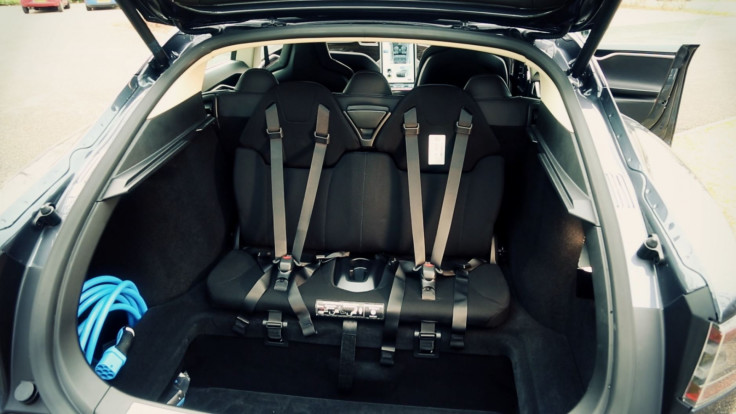
Tesla Model S: Interior
A 17in touch screen dominates the dashboard, acting as your control hub for everything from the stereo and sat-nav, to the sunroof, ambient lights, suspension, traction control and more. The car has its own 3G connection for maps, a web browser, software updates and connecting to the iPhone and Android apps.
Weirdly, the maps on the large screen are not stored on the car's hard drive, and so relying on the built-in 3G connection can be problematic. I drove from west London to Winchester and had no access to the mapping app for much journey. Thankfully, a second screen behind the steering wheel provides sat-nav from (albeit less detailed) maps stored locally; on that note, the sat-nav was just about flawless, even when guiding me through central London.
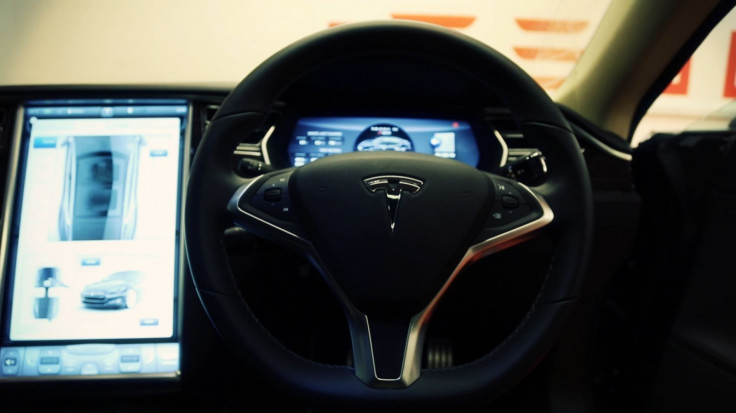
The larger screen also includes the car's climate controls, which look smart but are difficult to press without looking. I'd prefer physical controls, but maybe given time I'd get used to tapping the screen accurately without taking my eyes off the road.
Sadly I was left underwhelmed by the rest of the cabin. The seats don't offer the bolstering and support I'd expect from a high-performance car, there are no storage bins in the doors, the rear seats feel too upright, music sound quality is average and there's too much cheap plastic in place of leather and metal. Tesla is trying to rival the Mercedes S-Class, BMW 7-Series and Jaguar XJ, but all of these offer a more luxurious place to sit.
Tesla Model S: Driving
Apart from masses of power, the Model S has another quirk to the way it drives - regenerative braking. When you lift off the accelerator the car harvests energy through the motor and back into the batteries, causing it to slow more quickly than a regular car. The sensation is plain weird at first, but you soon learn how to modulate the pedal and slow down smoothly without ever touching the brake.
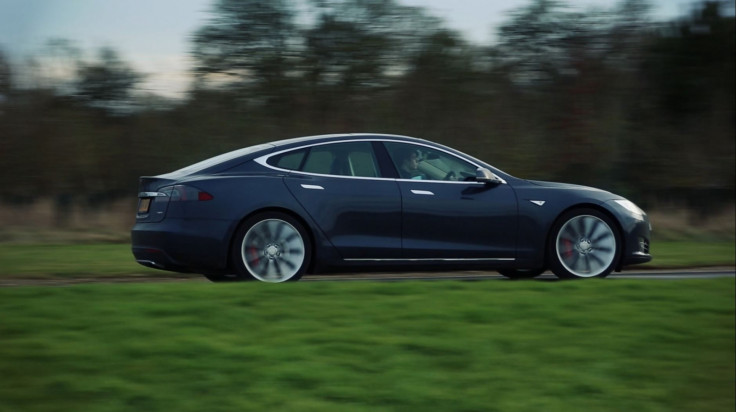
I found I could exit a motorway and slow to walking pace at the first set of traffic lights without using the brakes. To avoid confusing anyone following you, the car uses accelerometers to work out if the brake lights should come on or not each time you lift off the accelerator.
Otherwise, the Model S is like every other automatic car. It rides smoothly and quietly - although tyre and wind noise on the motorway were both higher than I was expecting - and at speed it felt composed and stable
Rear visibility is compromised by a short and steeply raked screen flanked by two huge C-pillars, but at least the parking camera helps here, as do sensors in every corner which tell you exactly how many inches away surrounding objects are.
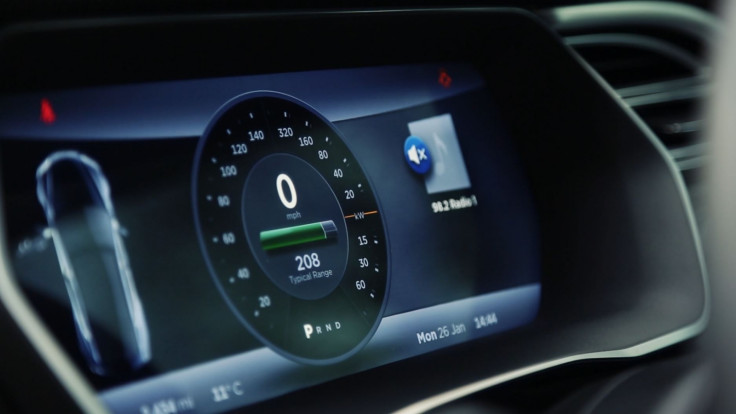
A quick note on the air suspension - it can be raised or lowered via the touch screen, and using GPS the car remembers where you do this. So if you raise it every day to avoid a large speed bump, the car will learn and start doing it for you.
Tesla Model S: Range
And so, to the perennial thorn in the electric car's side; range anxiety. Where most other electric cars - like the Nissan Leaf - have a range of about 100 miles and take several hours to charge, the Model S can drive 250 miles between charges and refilling the battery takes about an hour.
But there is a caveat, because such fast charging (80% in 40 minutes is the official claim) is only possible at Tesla's own 'Supercharger' stations. They're free, but for now there aren't many in the UK, especially if you want to travel away from London and the south east.
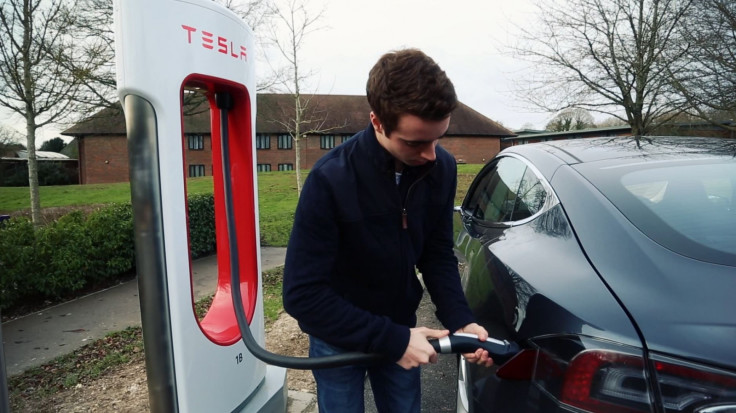
The Model S can be plugged into the more common changers dotted across city centres, but these require a paid membership to use and are much slower. Finally, you can even charge the car from a three-pin plug in your house - if you have a spare day or so.
I plugged into chargers in London, Reading and Winchester and found them very easy to use. You simply park, open the charging post on the left-rear corner of the car, connect the cable and go for a coffee.
There are currently 20 Supercharger stations in the UK, each with between two and eight charging ports, totalling 57 nationally. They're mostly found in car parks, so are conveniently placed.

For now, most of the UK's Superchargers are in the south east, with only Warrington and Edinburgh Airport providing power north of Birmingham. But more chargers are coming. Tesla plans to have more than 25 stations across the UK by the end of this year, providing "full coverage" by the end of 2015.
Tesla Model S: Verdict
As proof of the electric car concept, the Model S is almost without fault. It looks, feels and drives like any other car in its class; it is priced fairly, it charges quickly - for free, don't forget - and its acceleration is guaranteed to make your passengers swear.
Unlike the quirky i3 and i8 by BMW, the Tesla doesn't shout 'hey look at me, I'm electric, I'm different'. It just gets on with the job of being a car, and I applaud it for that.
But would I spend £80,000 of my own money on one? I was asked that a lot during my time with the car, and after more than 12 hours behind the wheel I still can't give a definitive answer.
By it's very nature, the Model S would be a first or second car - not a weekend toy - so it has to cover every base flawlessly. The interior is one base missed for a number of admittedly small reasons. Range, at least until 2016, will also be a concern to anyone not living in the south.
Driving the Tesla Model S feels like you're living in the future - but stick the radio and the heated seats on, fill the boot with shopping, take your friends on a road trip, out-accelerate a Porsche and stop for just an hour every 250 miles, and you soon realise the most startling thing about this car is that the future is already here.
Tesla Model S: Scores
- Styling: 8/10 - Handsome and classy, without looking too quirky. It turns the heads of those in the know
- Performance: 8/10 - Blisteringly quick acceleration and powerful brakes, but steering lacks feel and ride can be overly firm
- Practicality: 9/10 - Seating for five adults, two extra seats for children, and two large boots
- Interior: 6/10 - Comfortable enough and the touch screen is pure sci-fi, but let down by cheap plastics and lack of storage.
- Overall: 8/10 - Only a few small complaints limit what is otherwise a tour de force of innovation. This is what the future feels like, and it's only version 1.0.
Pros:
- Hyperspace acceleration.
- Spacious cabin, seating for seven and two boots.
- Stylish yet subtle design.
- Fast and free recharging.
Cons
- Funky interior let down by cheap plastics.
- Stereo sound quality needs improving.
- Rear seats not as comfortable as rivals.
- Large C-pillars limit rear visibility.
© Copyright IBTimes 2025. All rights reserved.






















